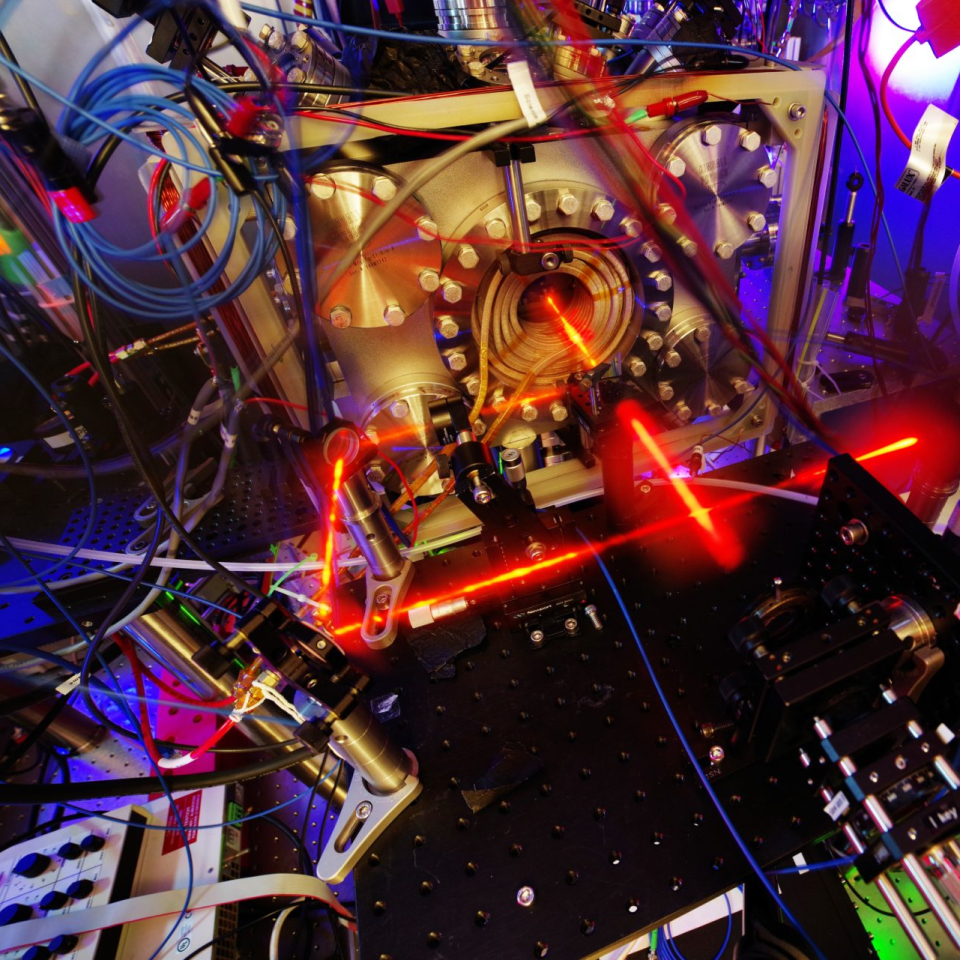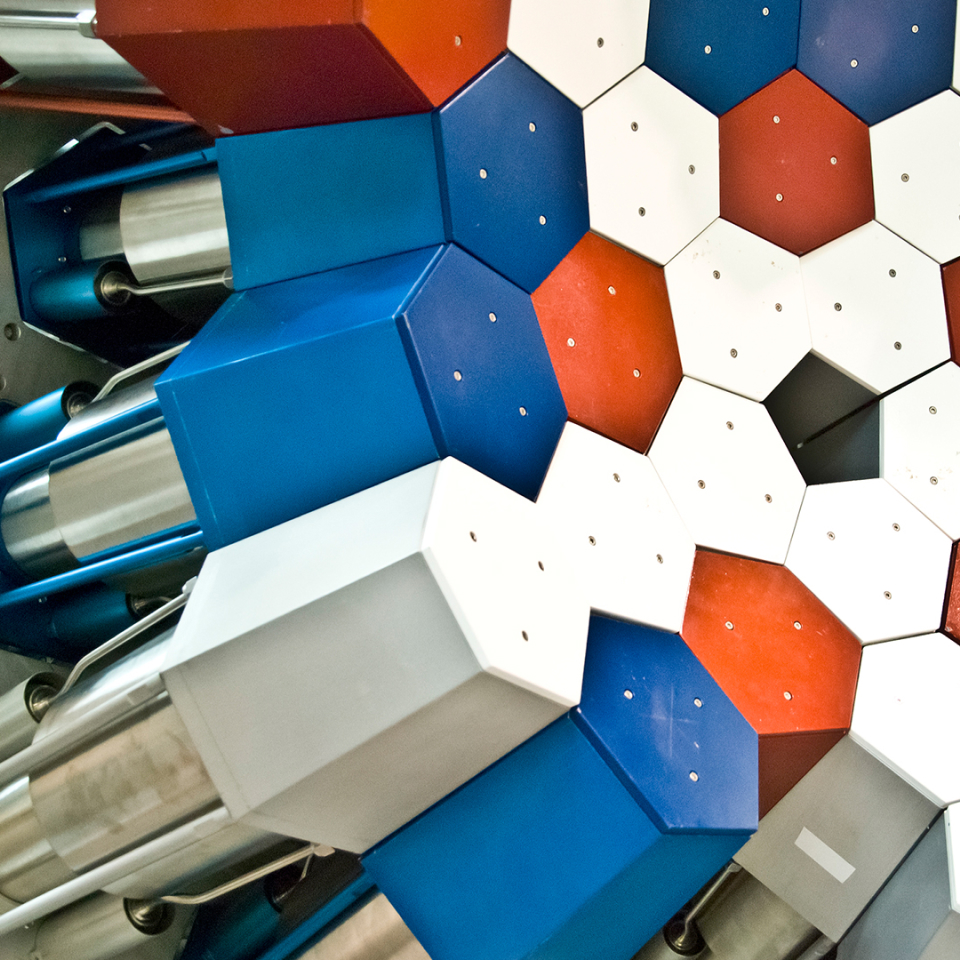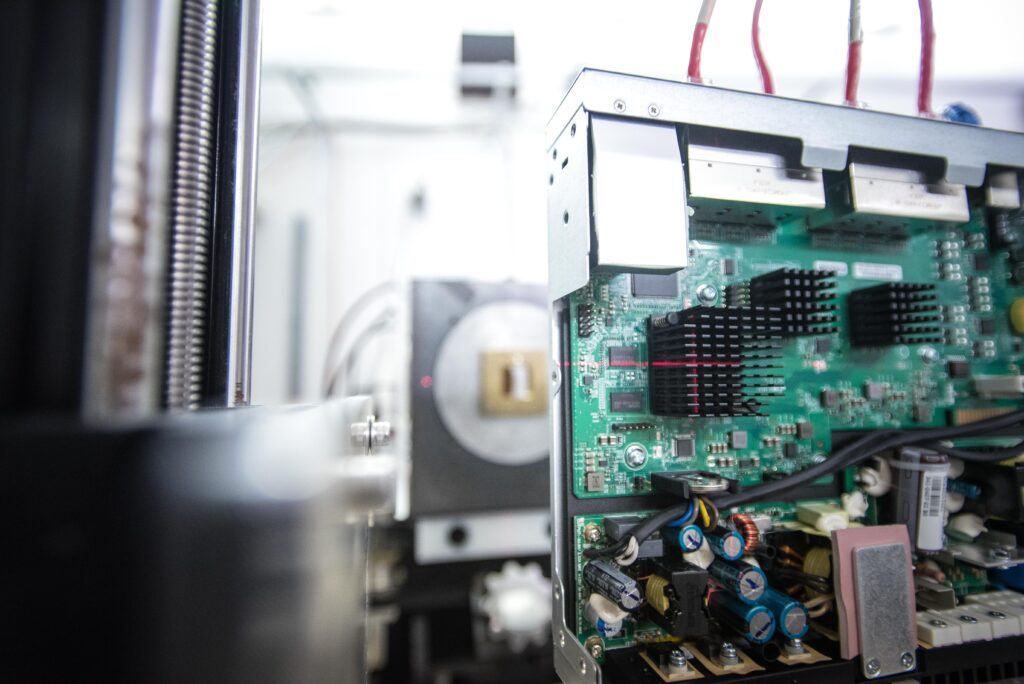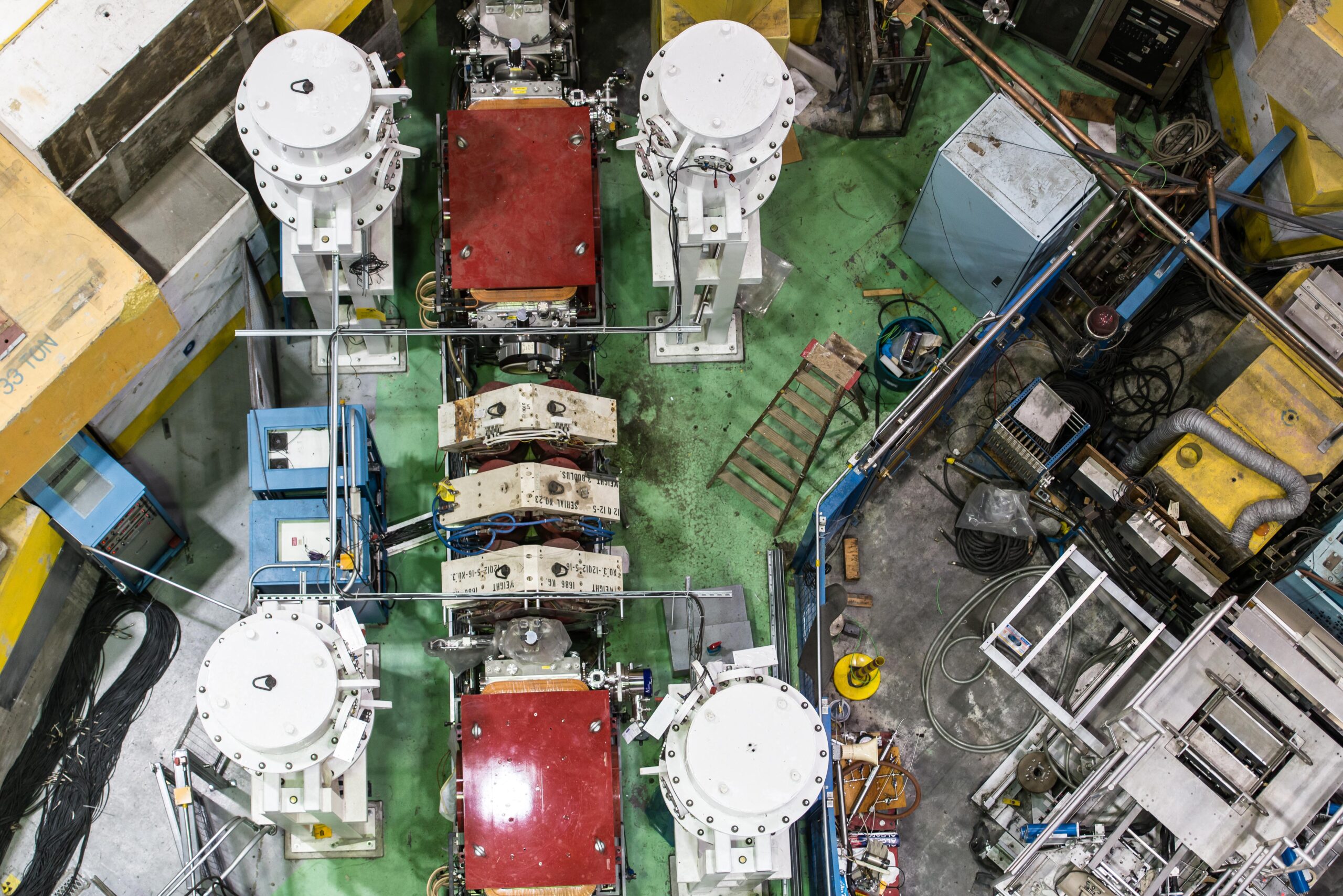Facilities & Experiments
TRIUMF’s 13.5-acre site is home to some of the world’s most advanced infrastructure for subatomic physics research.
We use our particle accelerators, targets, experimental stations, and radioisotope laboratories to explore the Universe, build new tools to fight diseases like cancer, and drive break-through innovation.
OUR LAB, CANADA'S SCIENCE
From the world’s largest cyclotron to the most powerful isotope separation online (ISOL) facility, TRIUMF’s infrastructure is unique in the world.
Leveraging over 50 years of experience building and operating some of the world’s most advanced accelerator and experimental facilities, our facilities and the communities that operate them enable Canada to collaborate and compete with other major international facilities in the delivery of world-class science and innovation.
At the forefront, two new flagship facilities – ARIEL and IAMI – will further augment TRIUMF’s existing accelerator and research infrastructure by bringing online additional new and advanced isotope production capacity. These facilities are the future face of TRIUMF, and they will significantly increasing our output of world-leading science and ensure Canada remains at the forefront in global science.
advanced rare isotope laboratory (ARIEL)
ARIEL is a flagship multidisciplinary research facility that synchronizes with and enhances TRIUMF’s existing accelerator and experimental facilities.
Primarily, ARIEL comprises:
- Superconducting e-linac
- Two additional target stations
- Canadian Rare Isotope facility with Electron Beam ion source (CANREB)

INSTITUTE FOR ADVANCED MEDICAL ISOTOPES (IAMI)
IAMI is a cutting-edge life sciences research centre that will significantly increase BC and Canada’s capacity for radiopharmaceutical research and the production of critically-needed medical isotopes, including technetium-99m and fluorine-18.
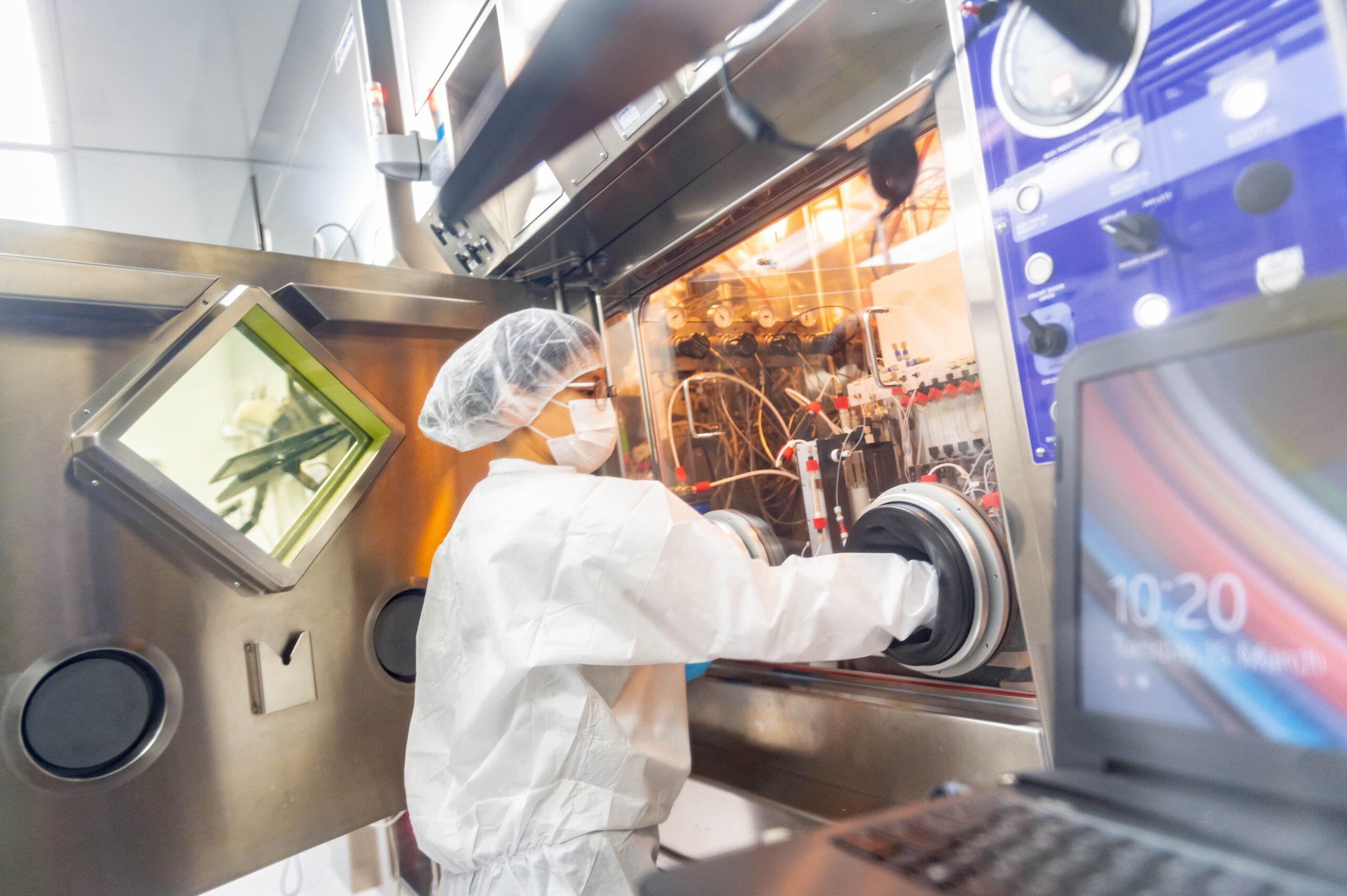
Accelerator facilities
Drivers
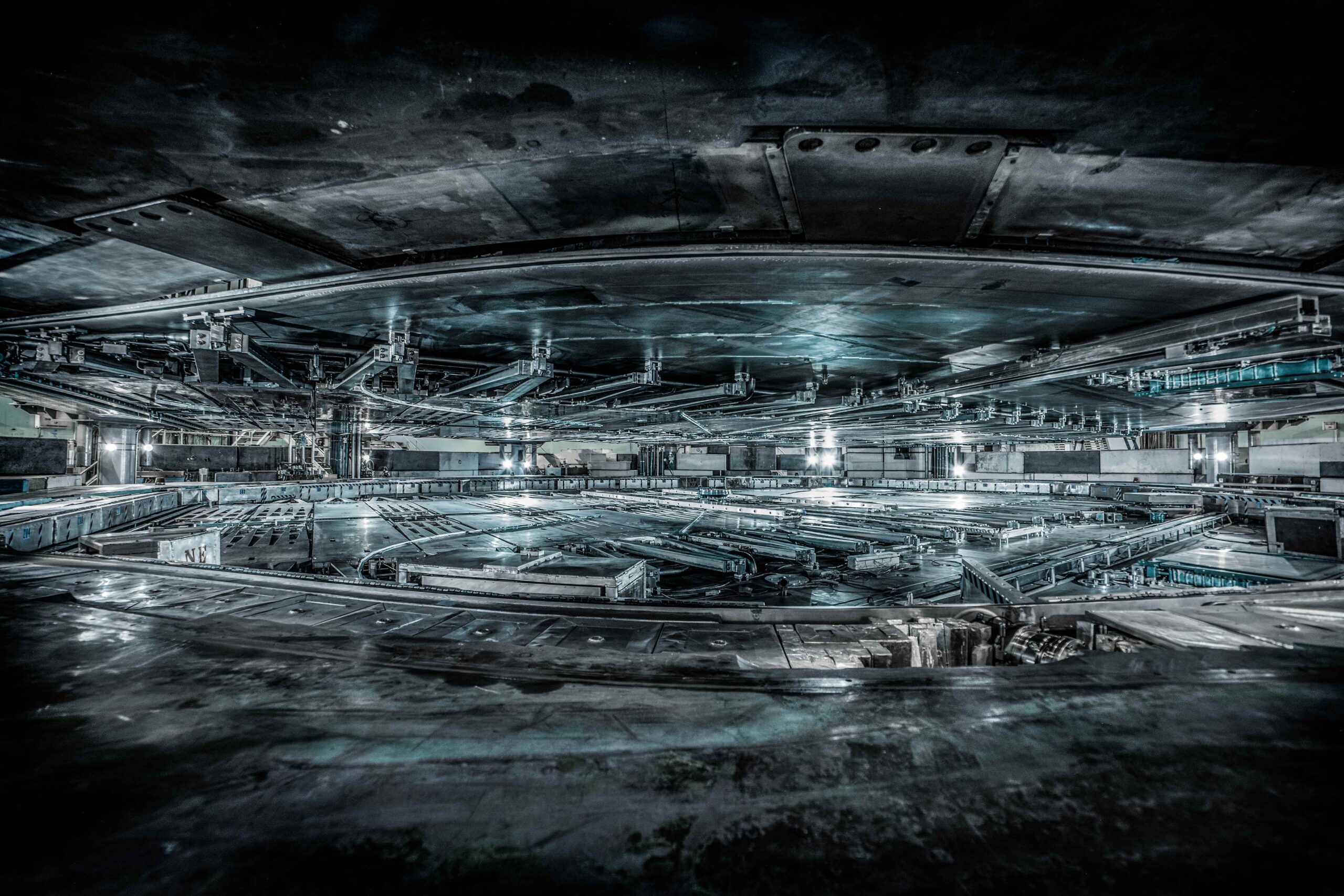
520 MeV Cyclotron
One of the world’s largest cyclotrons, the 520 MeV accelerates negative hydrogen ions to 75% the speed of light to produce intense proton beams for rare isotope production and a variety of other particle physics applications.
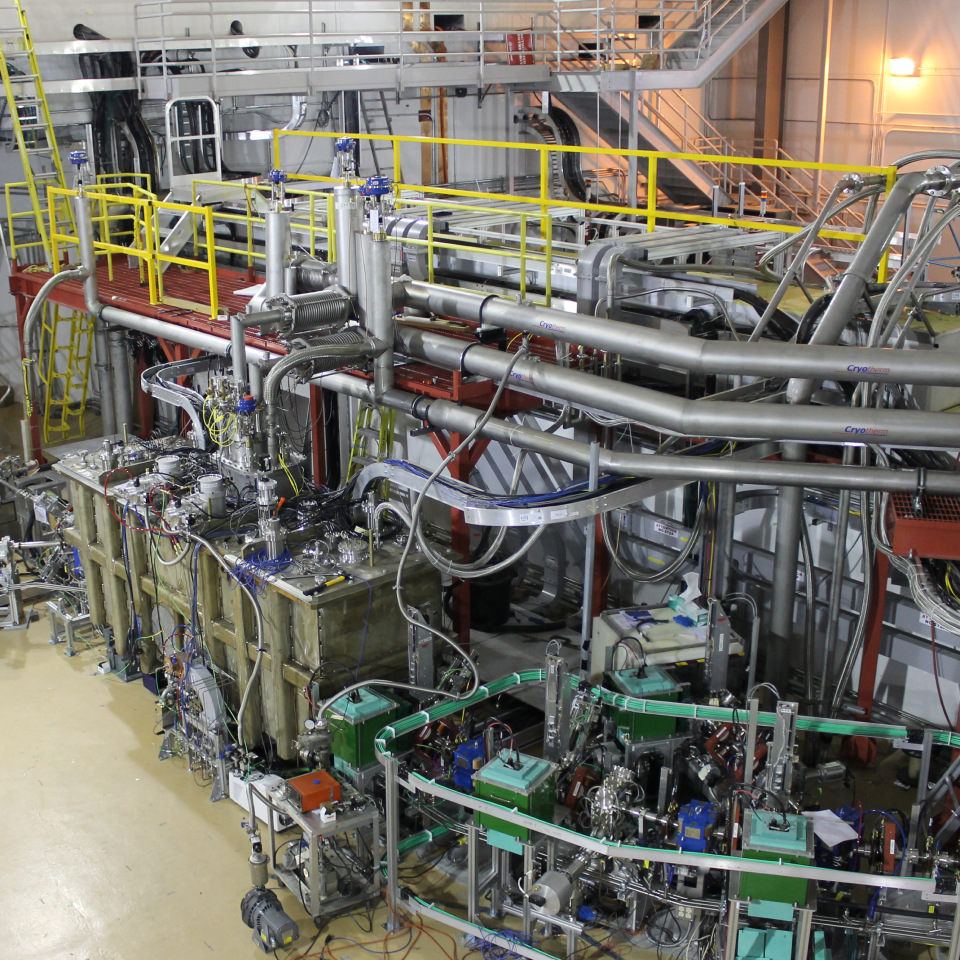
Superconducting E-linac
The world’s highest power e-linac for rare isotope production, the e-linac accelerates a beam of electrons to 99.99% of the speed of light and steers them to hit an isotope production target about 100 m away.
Post-Accelerators

ISAC-I Post-Accelerators
In the ISAC-I facility, rare isotope beams can be accelerated using a combination of a radiofrequency quadrupole (RFQ) and a drift tube linac (DTL). These post-accelerated beams add to the toolbox for researchers investigating atomic nuclei, supernova explosions, and more.
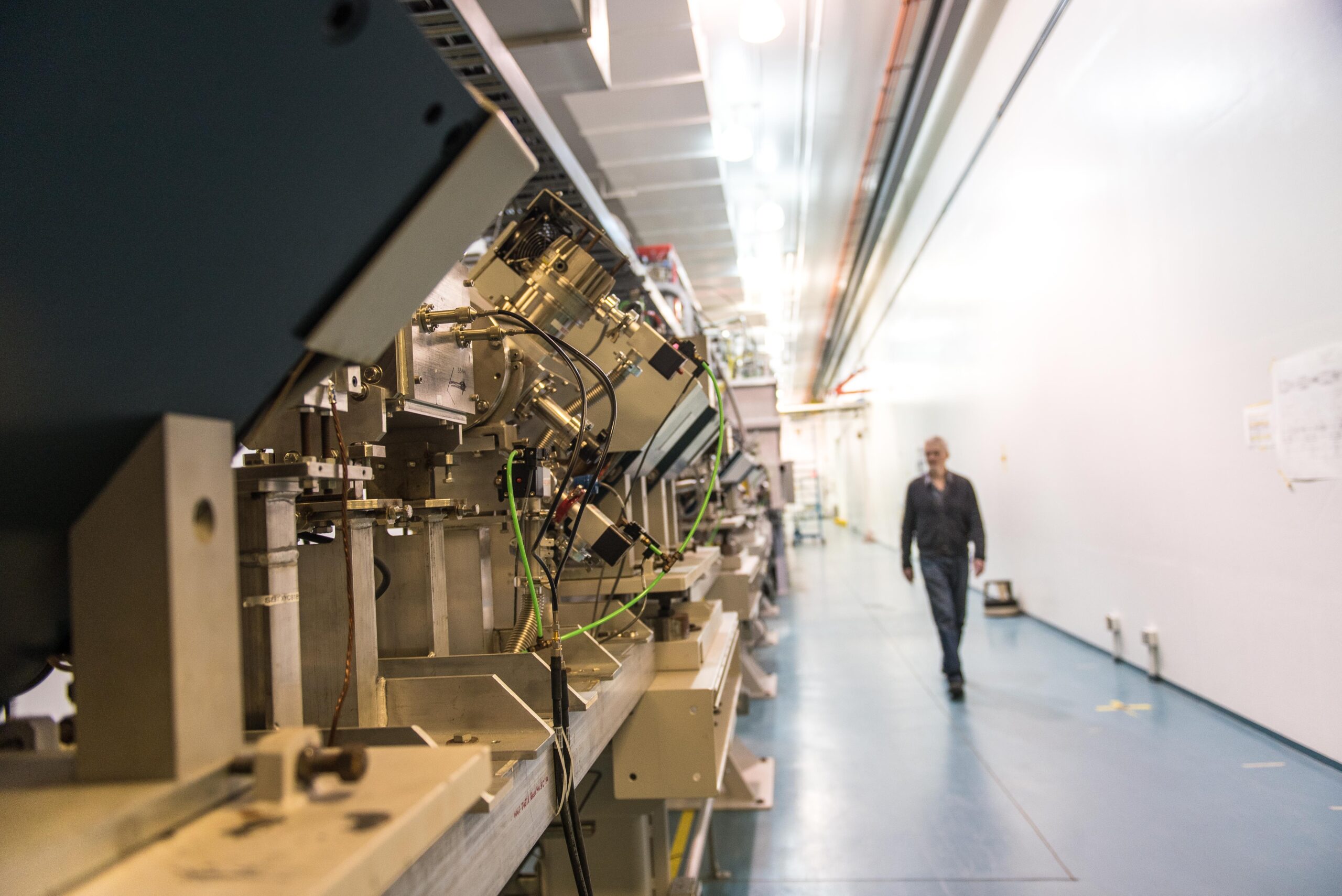
ISAC-II Superconducting linac
The ISAC II superconducting linac (SC-LINAC) can be considered the third acceleration stage of the ISAC facility. The ion beam at up to 1.5 MeV/u coming from the DTL is injected into the ISAC II linac.
EXPERIMENTAL FACILITIES
ISAC-I
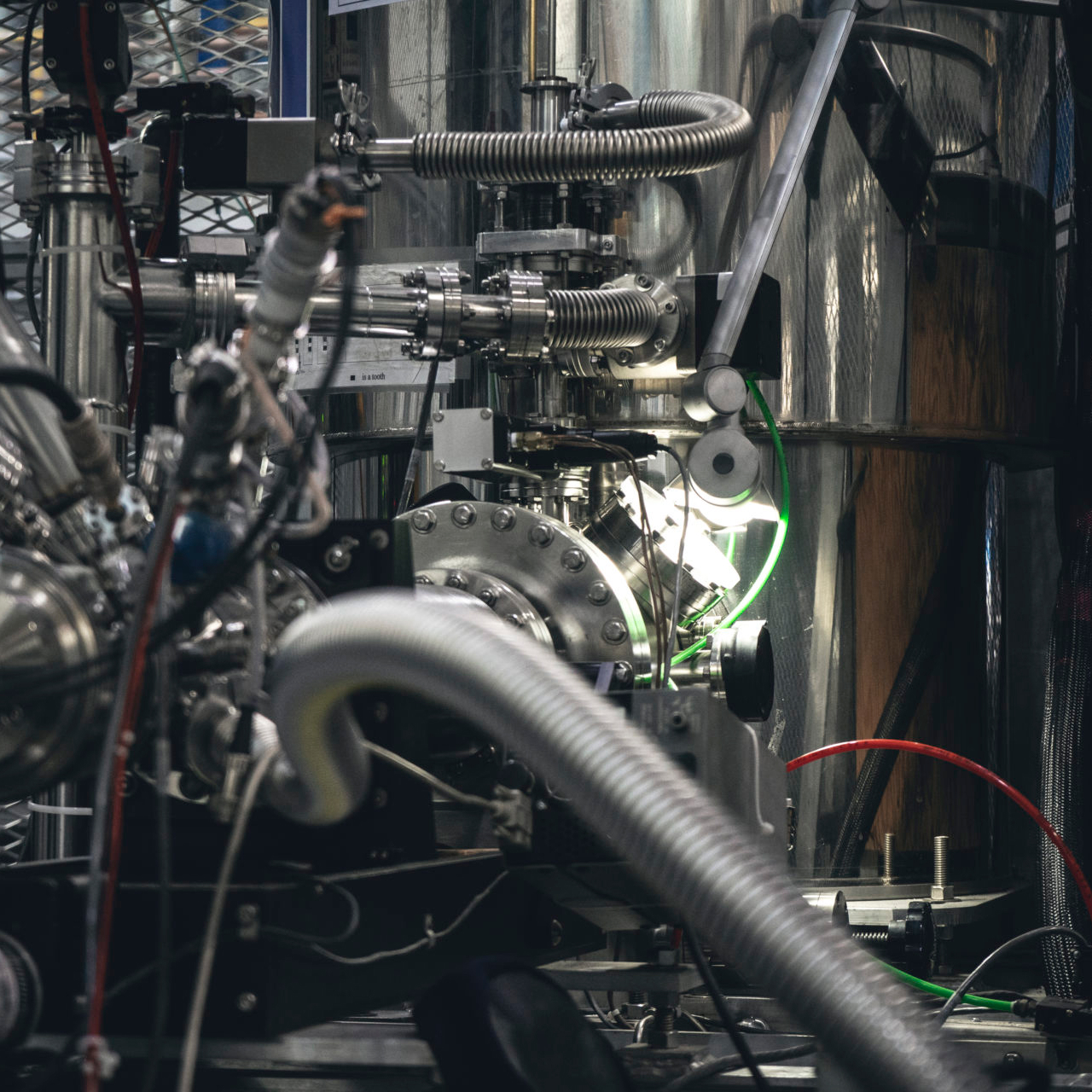
bNMR
At the βNMR (beta-detected Nuclear Magnetic Resonance) facility, scientists are using radioactive isotopes to take inside-out, atomic-level snapshots to guide the way to new materials and medicines.
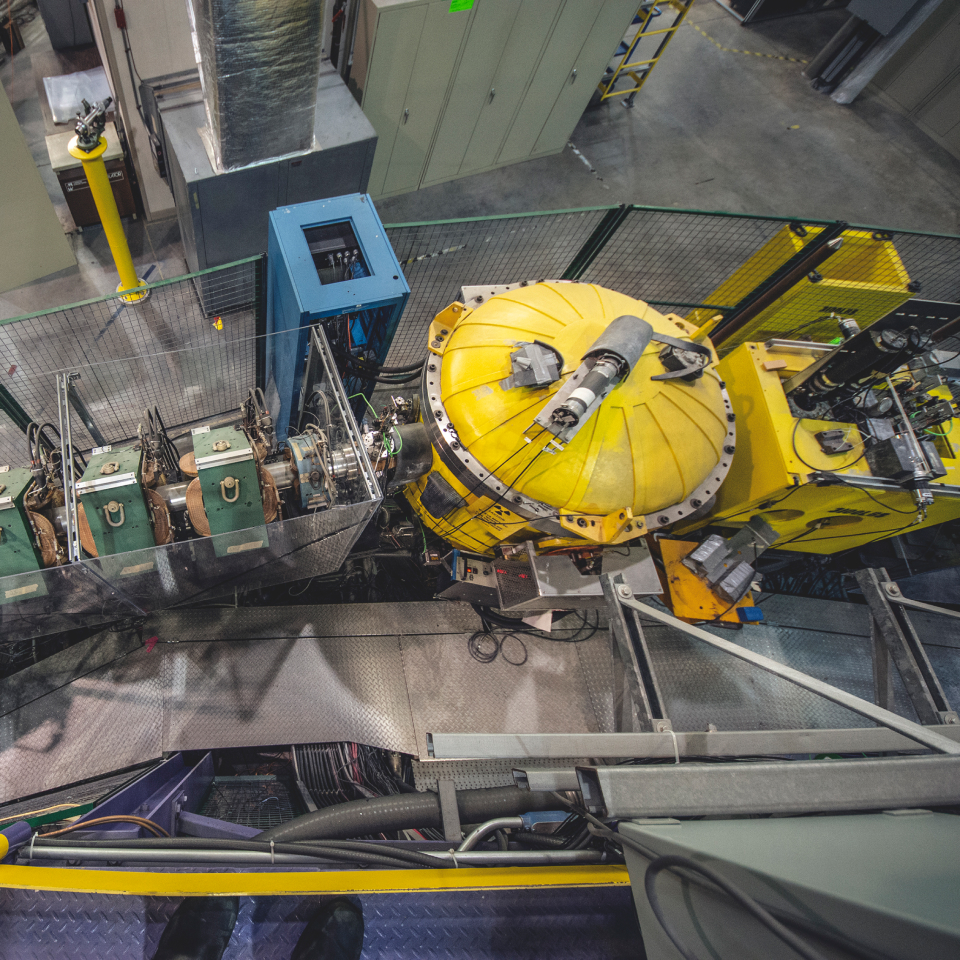
DRAGON
DRAGON (Detector of Recoils And Gammas of Nuclear Reactions) is a world unique facility which is giving astronomers a clearer view of our stardust origins by simulating the rapid nuclear reactions that take place in exploding stars.
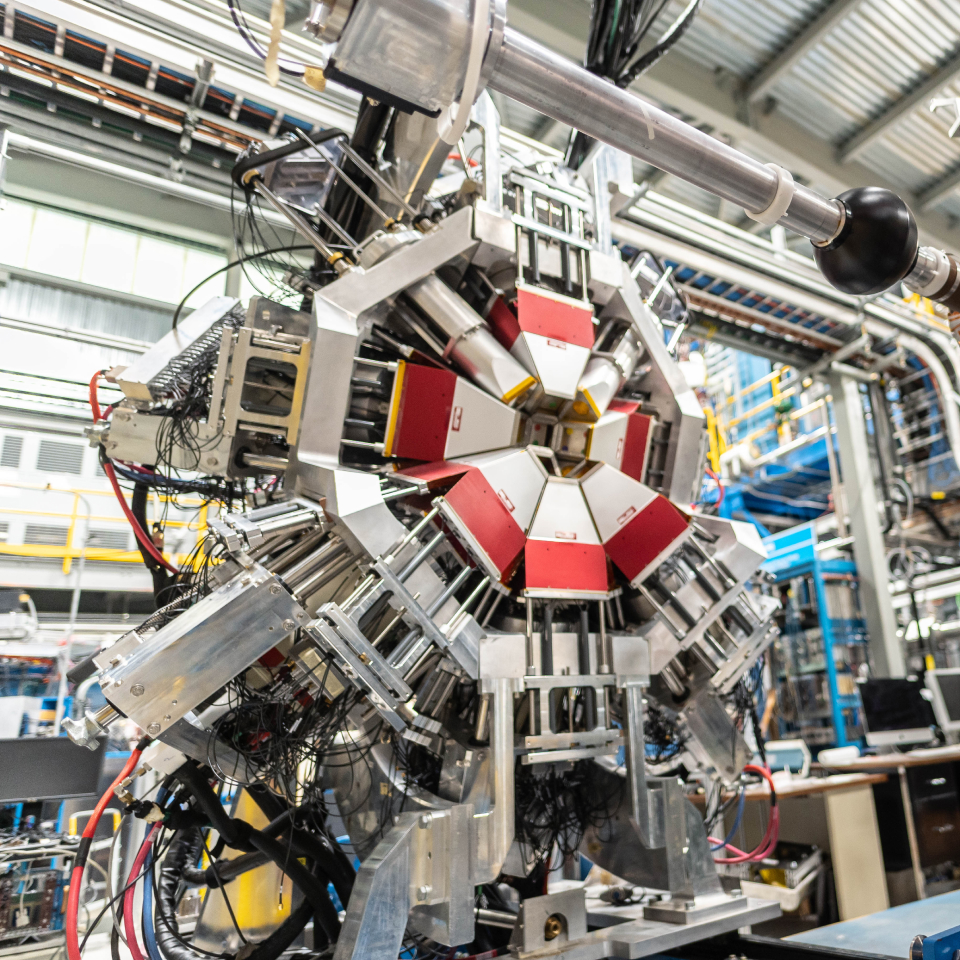
GRIFFIN
GRIFFIN (Gamma Ray Infrastructure For Fundamental Investigations of Nuclei) is the world’s most powerful tool for the decay spectroscopy of rare isotopes, and it is giving scientists an unparalleled view of the forces that create nuclear structure.
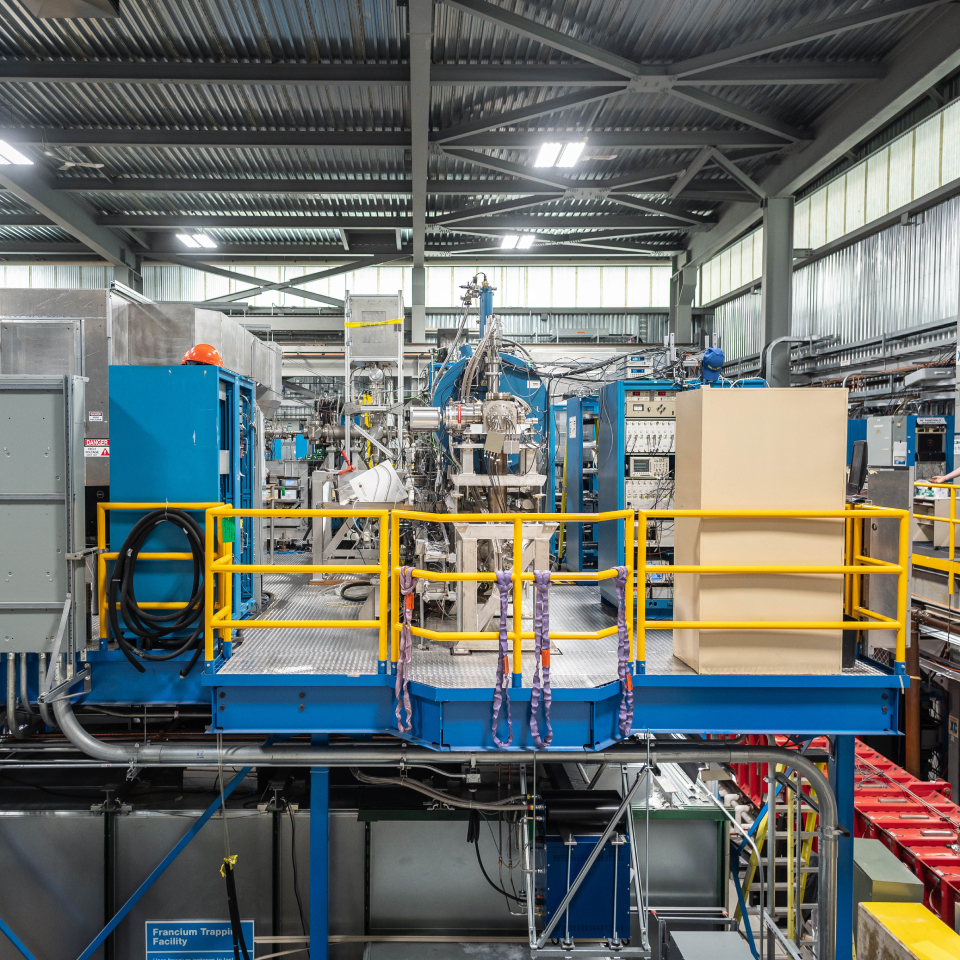
TITAN
TITAN, TRIUMF’s Ion Trap for Atomic and Nuclear science, is one of the world’s fastest and most precise tools for measuring the mass of a single atom, and the only facility able to do so with highly charged, rare isotopes.

TRINAT
TRINAT is an experimental facility that’s giving physicists a unique window into the nature of the weak force and possible physics beyond the Standard Model through making the world’s most precise measurements of the combined products of beta decay.

TUDA
With TUDA, TRIUMF scientists and international collaborators are making critical insights into key stellar element formation pathways that can only be experimentally studied using accelerated rare isotopes.
ISAC-II
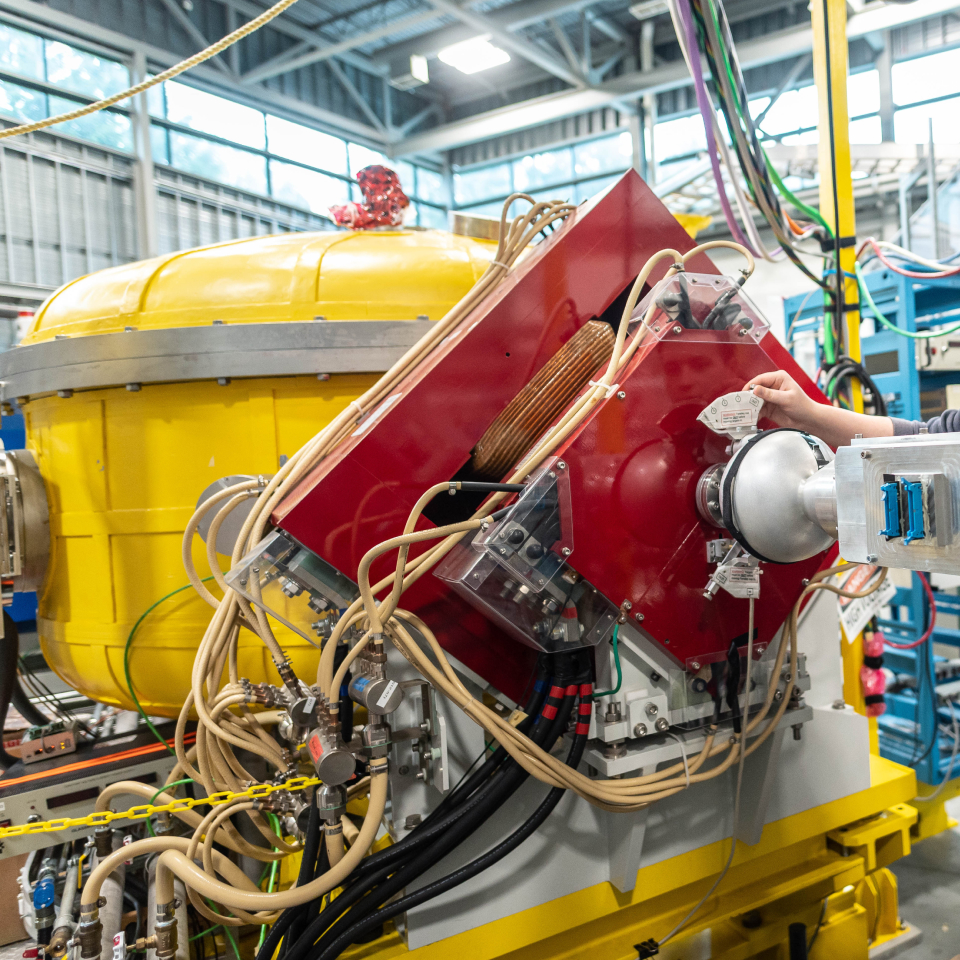
EMMA
With EMMA (the Electromagnetic Mass Analyzer), TRIUMF scientists are creating exotic nuclei, many never before studied precisely in a laboratory, to provide insights into nuclear structure and the origin of the elements formed in powerful stellar explosions.
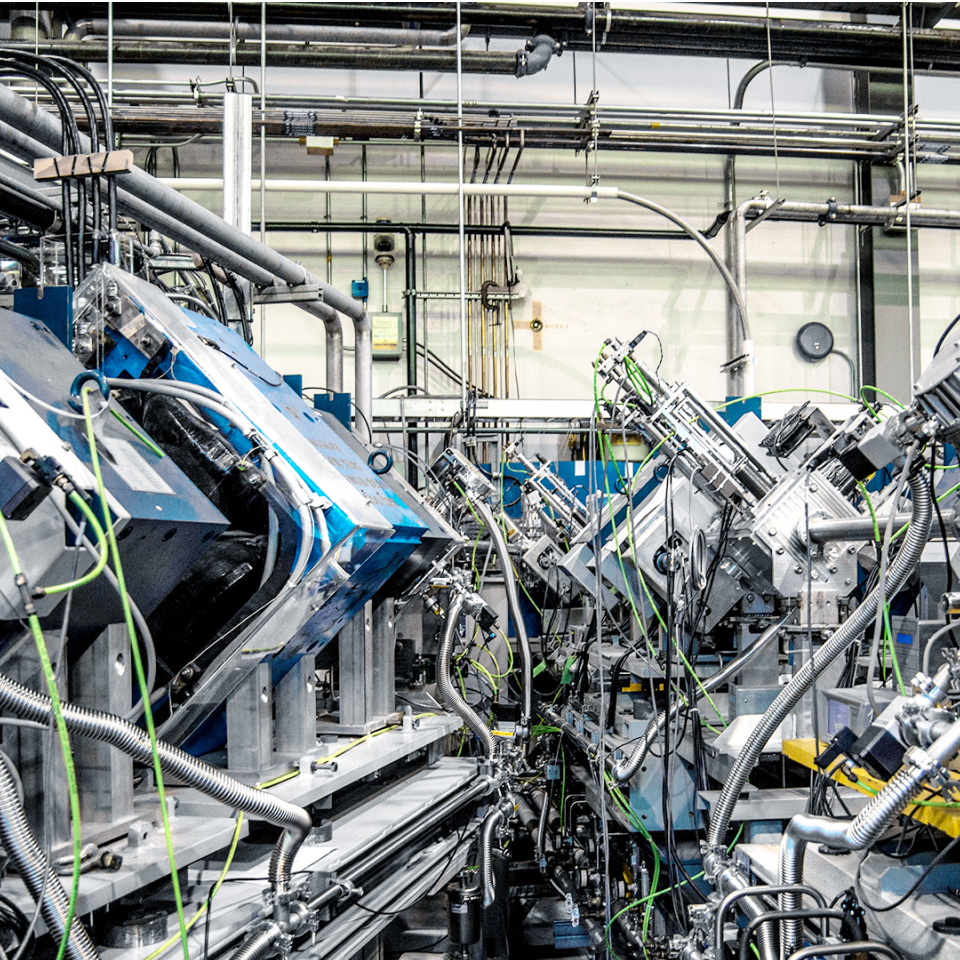
IRIS
TRIUMF’s IRIS (ISAC Charged Particle Reaction Spectroscopy Station) experimental facility is giving physicists a unique view of the strong force and unusual transformations in nuclear structure when nuclei are pushed to the extreme.

TIGRESS
With TIGRESS (TRIUMF-ISAC Gamma Ray Suppressed Spectrometer), an in-beam gamma ray spectrometer, TRIUMF scientists are opening a new era of high-precision nuclear structure experiments with rare isotopes.
MEDICAL ISOTOPE PRODUCTION FACILITIES
Drivers
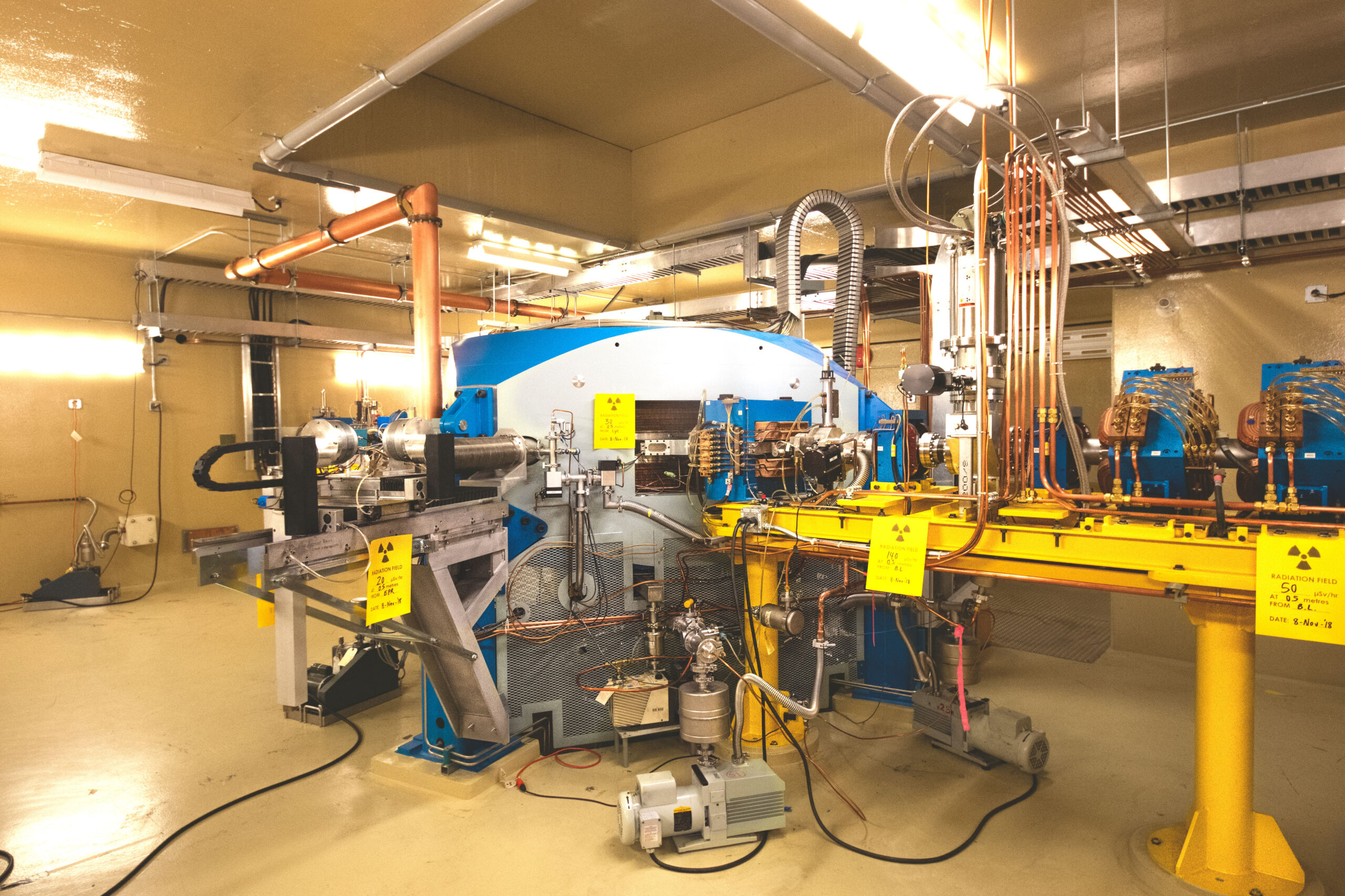
ATG Facilities
The Applied Technology Group team steward two on-site cyclotrons and work in partnership with collaborator BWXT Medical to produce nearly 2 million patient-doses of critically-needed medical isotopes for diagnostic scans and cutting-edge research.
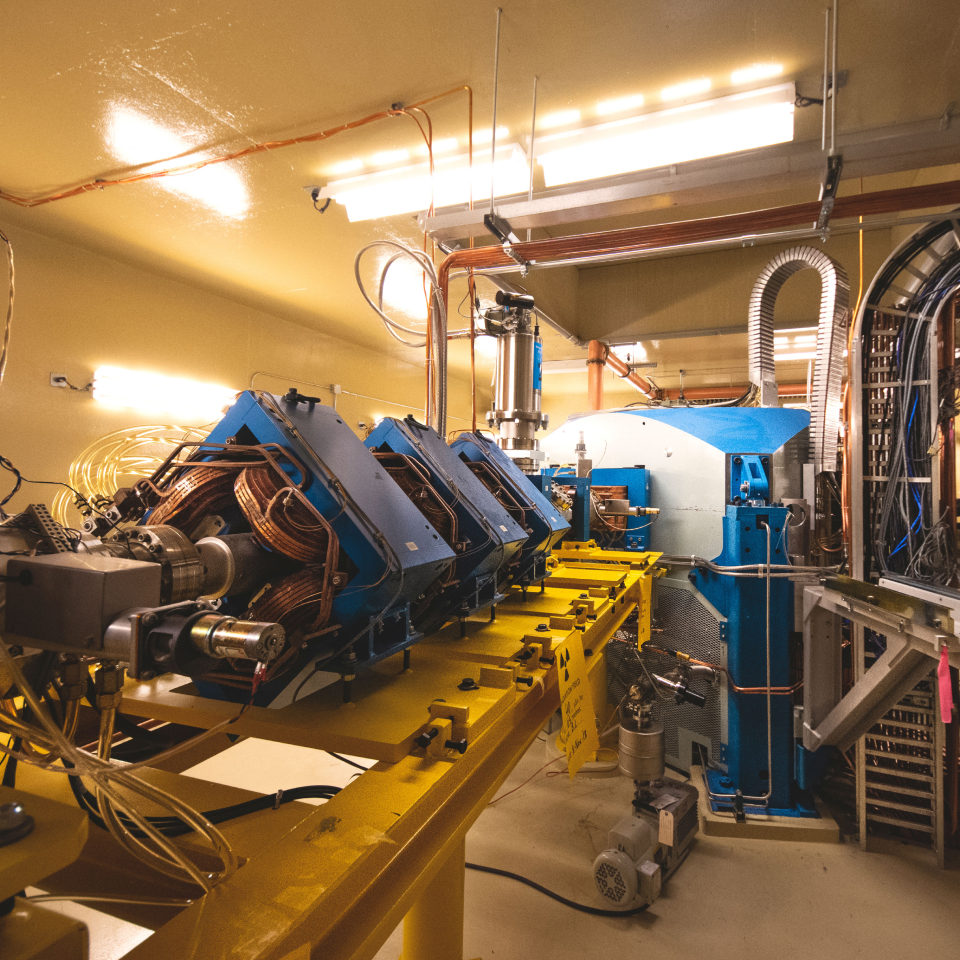
TR-13 Cyclotron
TRIUMF’s most compact cyclotron has played a central role in the development of the University of British Columbia‘s world-class positron emission tomography (PET) clinical research program, and in the development of the BC Cancer’s use of medical isotopes in clinical programs.
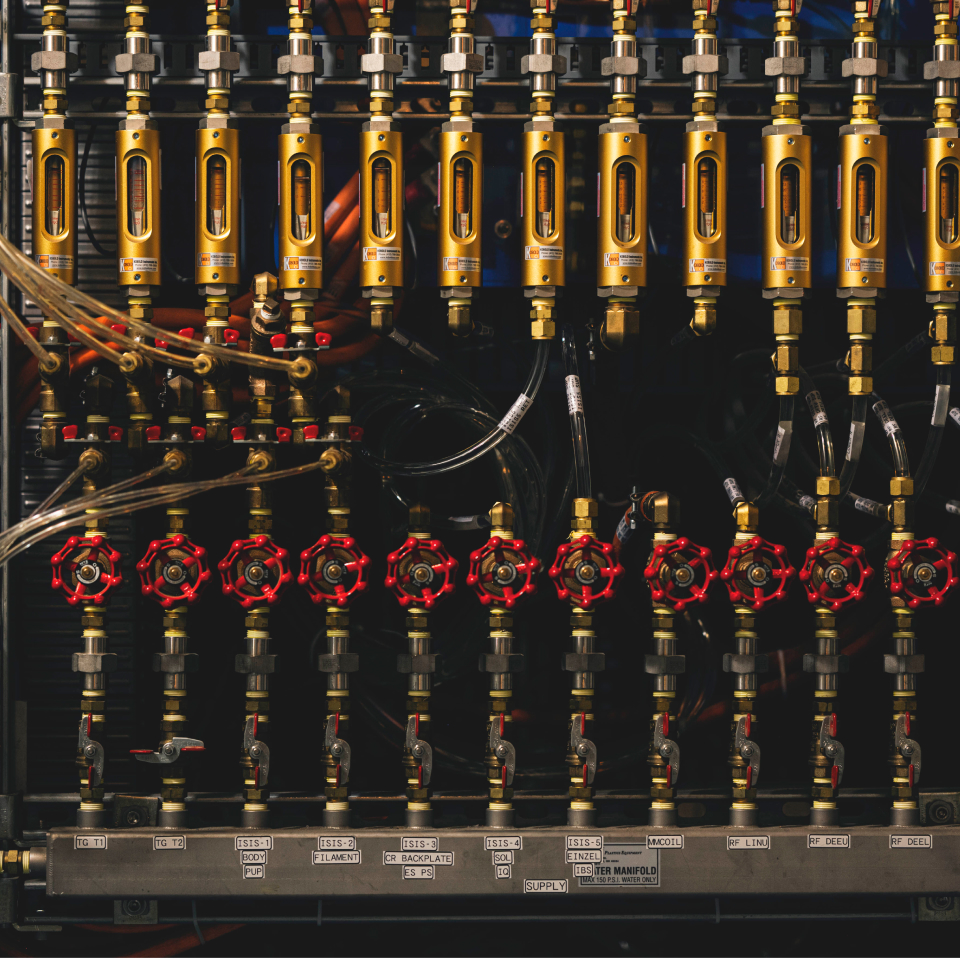
TR-24 Cyclotron
The TR-24 is a medium energy (15-24 MeV) cyclotron that operates with gas, liquid and solid targets. It’s optimized for producing a wide range and significant quantities clinical and research radioisotopes.
Life Sciences Laboratories
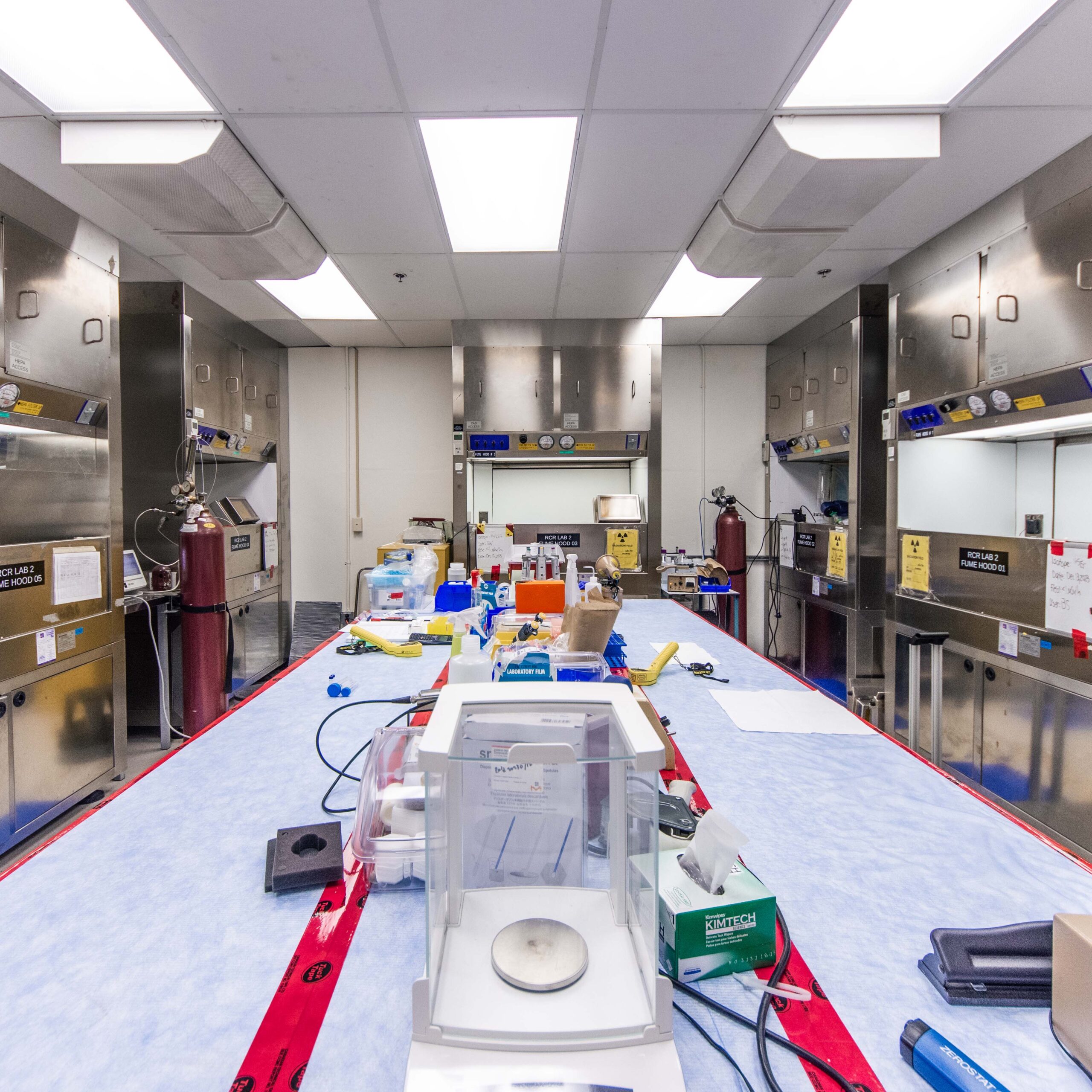
Radiochemistry Research Labs
The Radiochemistry Research Labs are where radionuclides are extracted, purified, and combined with peptide or antibodies to make radiotracers that can help visualize and diagnose diseases like cancer or Alzheimer’s.

Radiation Biology Lab
The Radiobiology Lab expands on TRIUMF’s decades-long track record of success in synthesizing radiopharmaceuticals (tracers), bringing online a fully functional tissue culture lab where novel radiopharmaceuticals can be evaluated from their initial design to receptor-binding assays.
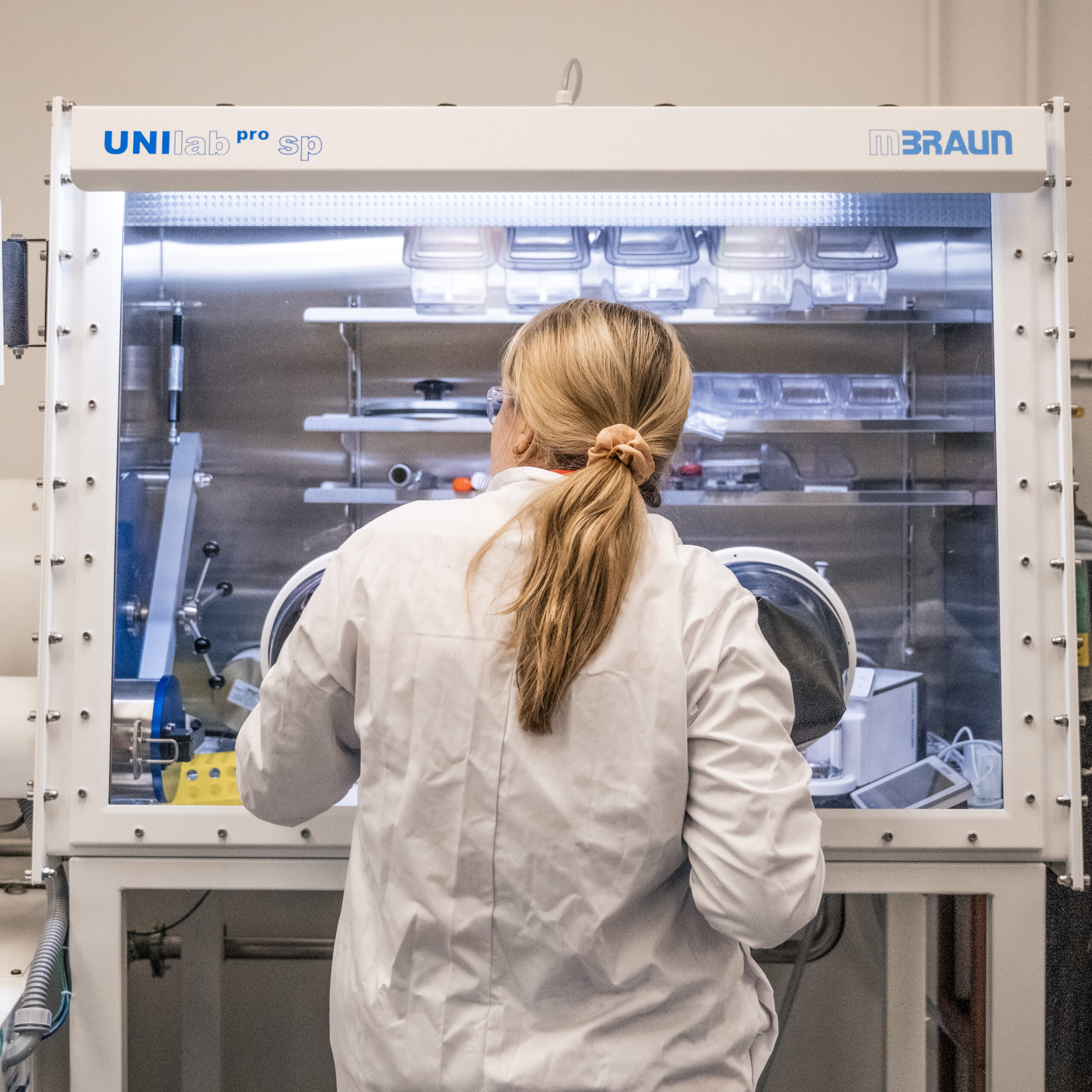
Target Design and Manufacturing Lab
In the Target Design and Manufacturing lab, researchers use materials like gold, calcium, barium, and other substances to create targets which, upon irradiation from a beam from a cyclotron, can create the isotopes required to make radionuclides.
INDUSTRY & USER FACILITIES
Irradiation Facilities (PIF & NIF)
TRIUMF’s proton- and neutron irradiation facilities (PIF & NIF) are premier sites for space-radiation effects testing using protons and neutrons. Users can simulate years of operation in space, air, or ground, effectively allowing users to perform accelerated testing of electronics components in the radiation conditions present in those environments.
Centre for Molecular and Materials Sciences (CMMS)
CMMS provides unique tools for Canadian and international scientists to better understand matter at the microscopic level. We provide intense spin-polarized beams of muons (µ+ or µ−) and lithium-8 (8Li), which are implanted into a material and characterized with novel magnetic resonance techniques known as µSR (muon spin rotation/relaxation/resonance) and βNMR (beta-detected nuclear magnetic resonance).

